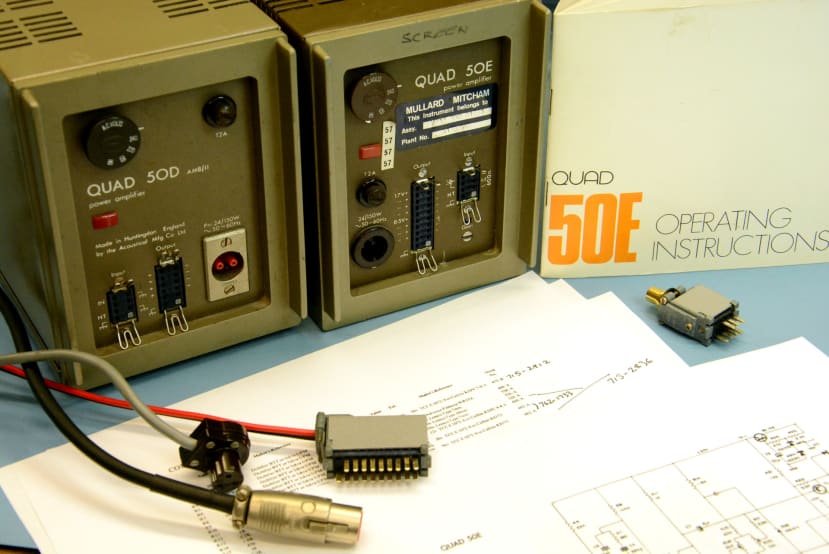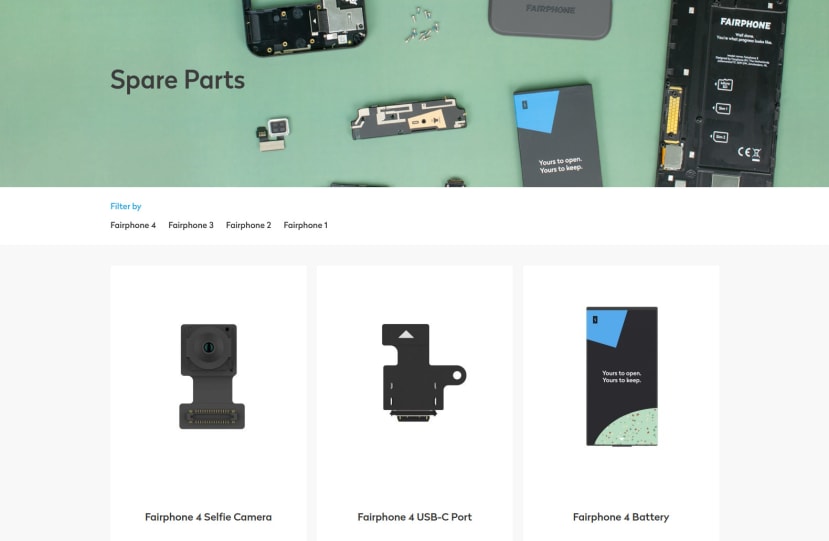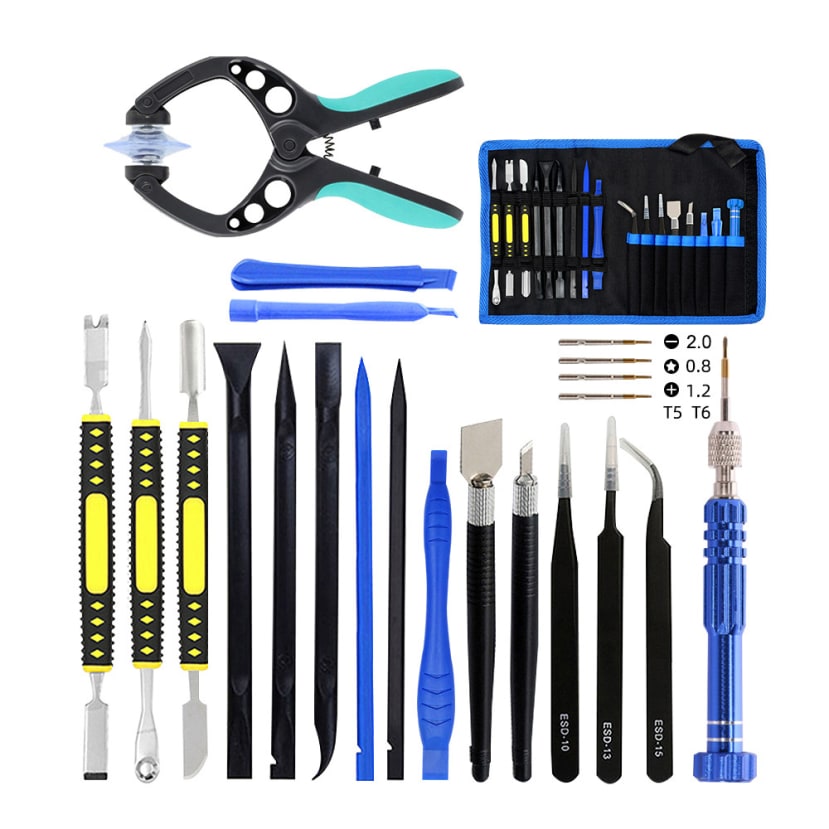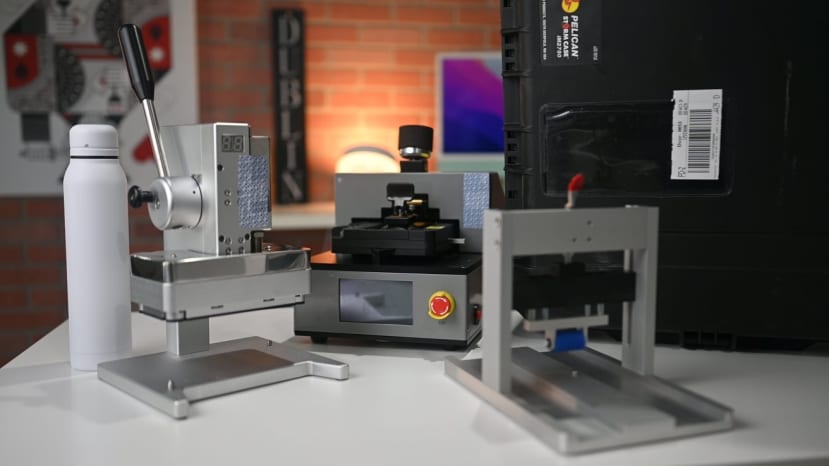Tools for Enabling Right to Repair
Follow articleHow do you feel about this article? Help us to provide better content for you.
Thank you! Your feedback has been received.
There was a problem submitting your feedback, please try again later.
What do you think of this article?
Exploring some of the practical tools and approaches to enabling self-repair.
In a previous article we took a look at right to repair and the need to strike a balance between conflicting requirements such as features, user serviceability and cost. Without which we will struggle to have products that are sustainable in the wider sense — meeting user needs, standing the test of time and that are successful, while also being environmentally sustainable.
In this article we’ll next take a closer look at some of the tools which may be used to enable right to repair, exploring the benefits and challenges associated with these, together with some examples.
Information
Amplifiers and schematics from the article, Servicing Classic QUAD 50 Amplifiers.
Information is the single most effective tool when it comes to enabling serviceability and without this fault finding and repair work, etc. may be severely hindered. Such supporting information may be provided in many different forms, including but not limited to:
- User guides
- Diagnostic information
- Service manuals
- Parts lists
- How-to guides
- Instructional videos
Many IT vendors — and in particular those providing enterprise solutions — will publish documentation with an illustrated parts breakdown and list of major components, together with details of valid configurations and certified compatible parts. Similarly, vehicle manufacturers will provide workshop manuals to dealerships, while third party parties will publish similar, albeit simpler, manuals for smaller garages and those who wish to carry out their own repairs.
However, it is frequently the case when searching for such information in connection with other products that this is hard to come by, and all that may be found are self-repair details posted to a forum or anecdotal information to a personal blog. Other times you may strike lucky and find actual manufacturer documentation, but via dubious PDF harvesting websites located via a search engine, and where you are not quite sure whether the document is up-to-date or entirely relevant.
Going back a few decades and self-repair was admittedly easier since things tended to be simpler, but in addition to which technical information tended to be much more freely available. Examples of which include repair manuals for televisions and, go back far enough, schematics printed on the inside of radio enclosures.
So while there is an undeniable benefit to user-generated content such as how-to guides and instructional video, there is clearly a pressing need for manufacturers to do far more — as many used to and others continues to do — in enabling servicing and repairs, both by owners and smaller repair shops. In short, by providing materials which help to answer basic questions such as:
- How does it function at a high level?
- How do I diagnose a fault?
- What are the common faults?
- What are the part specifications?
The last point being particularly important. To give an example, a laptop may become unusable due to nothing more than a faulty DC power connector. Replacing this may be a simple job, but unless you can find a part with the correct specification, PCB footprint and mechanical form factor, repair may be impossible — at least without some ugly and potentially dangerous modification.
Therefore it may rarely be necessary to publish full schematics while providing just a partial bill of materials (BOM) which includes e.g. high wear components such as connectors and switches, could have the potential to significantly extend the useful lifetime of a great many devices.
Design
Replacing the USB-C port of the Fairphone 4.
Design with repair in mind is somewhat more contentious, as while providing simple maintenance documentation costs relatively little, designing a product so that it can more easily be repaired has the potential to increase cost and/or introduce compromise in other areas, such as performance, features, reliability and aesthetics. This is something that was explored in a little more detail in the article, Right to Repair and Striking the Sustainability Balance.
Examples of design with future repair in mind include having replaceable high wear and shorter lifetime components as noted earlier, such as switches and connectors. Also implementing modularity where this will have greatest benefit and minimal cost, while also thinking about the overall process and user experience, rather than simply in terms of what can be swapped out.
The Fairphone mobile phone serves a great exemplar for self-repair design principles.
Supply chain
The Fairphone online shop.
So now we have the information required to carry out fault finding, we’ve identified the failed component and need to replace this, but where do we actually buy the part? Many components will be readily available from a number of distributors, but locating the precise part may prove challenging. Hence providing information in the form of both manufacturer and distributor part numbers may help immensely and could save hours searching through similar parts.
Meanwhile, there will also be parts that are not readily available, since there can be tremendous variety in the components used, particularly in high volume mass market products, where component manufacturers will sometimes provide special parts that have been tailored for the customer. Hence here there is an opportunity to make those same parts available for repair purposes.
Tooling
A budget generic toolkit for simple mobile phone repairs.
It is rare nowadays to see a PCB assembly implemented with through-hole technology and as far back as in the early-mid 1990s, we waved goodbye to easily being able to carry out component level repair on PC motherboards; one minute you could swap out a fried keyboard controller in an 80286, then you discovered with your new 80386 PC that all the ICs were surface mount devices.
Of course, we have come a long way since then and while surface mount technology has become ever smaller, many more have become comfortable working with this and furthermore, developed tricks and techniques for reworking it with minimal financial outlay. However, unfortunately, that’s not where the story ends and modern enclosures — notably for mobile phones in particular — have also become much more challenging to work with, due to being made up of very carefully aligned, compressed and glued sandwiches of glass, circuit board, plastic and metal.
This should hardly be surprising, as the trend continues towards ever thinner, lighter and smoother devices, with fasteners such as screws designed out whenever possible. The result being that the options are either getting creative with “spudger” tools, suction cups and whatever hot air source you have to hand, else taking it into a repair shop.
Apple Self Repair programme toolkit, AppleInsider.
When Apple announced Self Service Repair there was genuine surprise at the level — and sheer volume and weight — of the tooling rented via the programme. However, again this probably shouldn’t be that surprising, given Apple’s dedication to aesthetics and how they would be unlikely to offer a solution where the repaired product might easily have a poorly aligned, scratched or cracked screen, else parts not properly resealed. Or worse still, repair attempts that resulted in total failure, or even LiPo battery packs being damaged in the process and bursting into flames.
Here we also come back to design with repair in mind and compromises may have to be made according to the overall competing priorities, but at the very least tooling should be considered and where appropriate, made available to purchase or rent.
Support
There is an opportunity for manufacturers to add significant value by supporting self-repair and services offered by third party providers, as there is something particularly satisfying about buying a product and then years later being able to buy spare parts and get support from the manufacturer servicing department.
This has been the case for some time with certain higher value products, such as premium HiFi components. A great example of which being Quad, who in recent years would still service and sell spare parts for valve audio amplifiers designed in the 1950s, alongside parts for later models. However, PCs, high end HiFi and white goods such as washing machines aside, this is quite rare and most consumer device manufacturers assume that broken products will simply be disposed of.
Final words
There are numerous ways in which manufacturers may support self-repair, ranging from those which would take minimal effort, such as publishing simple servicing documentation, through to those which are more involved, such as providing spare parts and servicing support.
Manufacturers of goods in certain markets have demonstrated what is possible in terms of self-servicing and enabling networks of independent service provides. We can also look to the past and the heyday of radio and TV repair, while also now benefiting from information technology and social platforms etc. which engineers and enthusiasts decades previous could only have dreamed of.
There are also admittedly some potential issues which we have not been covered here, concerning warranties, safety and liability with repairs. However, it should be possible to address these by use of appropriate warnings, disclaimers, and limitations in agreements etc.
Top image from the article, Restoring a Vintage Allen and Heath S6-2 Production Mixer.






